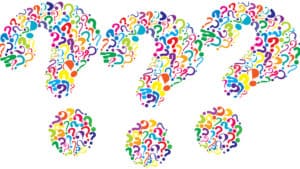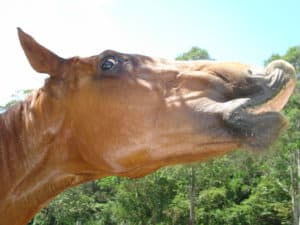15 facts you may not have known about your horse!

- The equine eye is the largest of all land mammals. Like many prey species, horse’s eyes are located on the side of their head so they have a wide range of vision, enabling them to see almost 360 degrees at all times. They only have blind spots immediately in front and behind their bodies.
- Horses have 205 skeletal bones. The smallest equine bone is the Petrous Temporal in the ear and the largest long bone is the Femur.
- ‘Flehman’ is the term used to describe when horses curl their lip back and show their teeth. They use this nose enhancing technique to determine a smell.
- Lysine is just as important in your horse’s diet as protein. A horse will only utilize dietary protein provision up to the lowest level of the most limiting amino acid. A shortage of any one essential amino acid makes overall protein utilization by the horse less efficient. Most of the time the most limiting amino acid in a horses diet is Lysine. Luckily, Ranvet supplements contain the correct amount of Lysine for your horse.
- Horses are obligate nasal breathers, meaning they must breathe through their nostrils, and cannot breathe through their mouth.
- The fastest recorded speed of a horse was 70.76km/hour by a horse called Winning Brew at the Penn National Race Course in Pennsylvania, United States in 2008.
- The record for the highest jump made by a horse was 2.47 meters by a horse named Huaso ex-Faithful in Chile in 1949.
- Horses lack the ability to vomit. After food passes into the horse’s stomach, the ring of muscles closes tightly, stopping any food from reentering the esophagus. Because of this, horses often roll when they have stomach pain.
- A small indent in a horses skin (usually on the neck or shoulder) is called a prophet’s mark and is considered good luck.
- Horses have 7 internationally recognized common blood types. These are A, C, D, K, P, Q and U.
- Horses can run fast because they are very efficient. They don’t have muscles in the bottom half of their legs, just tendons and ligaments to help them move. The energy stored in the tendons and ligaments work like pogo sticks propelling forward and upwards. Thoroughbreds can bring their legs forward in turn for the next stride much faster than other breeds.
- Horses have 16 muscles in each ear. This allows them to rotate 180 degrees.
- A horse’s knee joint is the equivalent to a human wrist, and their hock joint is equivalent to the human ankle.
- Coprophagy is the behaviour of eating faeces. This behaviour is associated with a lack of roughage, protein or minerals. It can also be an indicator or a possible parasite burden.
- It takes days for food to go in one end and out the other however, the food only spends 15 minutes in the equine stomach. The stomach of the horse is very small in relation to the oversize of the animal, and it makes up only about 10% of the capacity of the entire digestive system.

Experts in Equine Nutrition
Every product in the Ranvet range has been developed to meet a horse’s most specific need at any given time, be it in a training environment or on a breeding farm. Having pioneered the formulation of specific medications and dietary supplements for horses, the company is now recognised as a leader in the areas of equine health and nutrition.
